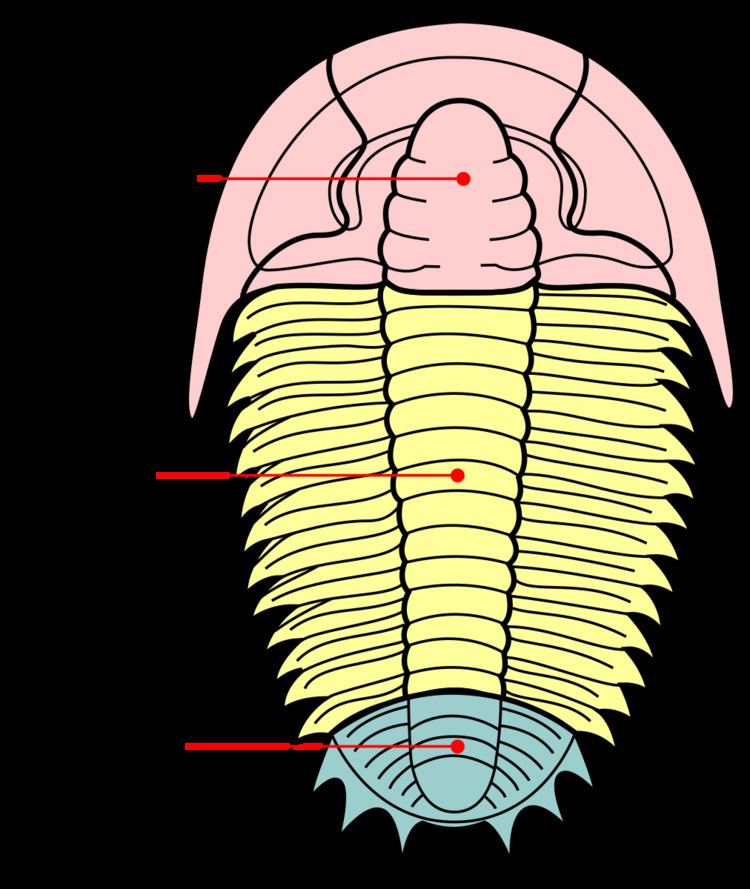 | ||
In biology a tagma (Greek: τάγμα, plural tagmata - τάγματα) is a specialized grouping of multiple segments or metameres into a coherently functional morphological unit. Familiar examples are the head, the thorax, and the abdomen of insects. The metameres within a tagma may be either fused (such as in the head of an insect or a mammal) or so jointed as to be independently moveable (such as in the abdomen of most insects).
Contents
Usually the term is taken to refer to tagmata in the morphology of members of the phylum Arthropoda, but it applies equally validly in other phyla, such as the Chordata.
In a given taxon the names assigned to particular tagmata are in some sense informal and arbitrary; for example, not all the tagmata of species within a given subphylum of the Arthropoda are homologous to those of species in other subphyla; for one thing they do not all comprise corresponding somites, and for another, not all the tagmata have closely analogous functions or anatomy. In some cases this has led to earlier names for tagmata being more or less successfully superseded. For example, the one-time terms "cephalothorax" and "abdomen" of the Araneae, though not yet strictly regarded as invalid, are giving way to prosoma and opisthosoma. The latter two terms carry less of a suggestion of homology with the significantly different tagmata of insects.
Tagmata
Tagma divisions vary among taxa. For example, in trilobite anatomy there were three tagmata: the cephalon (meaning head), the thorax (literally meaning chest, but in this application referring to the mid-portion of the body), and the pygidium (meaning rump). In contrast, though the Hexapoda also have three tagmata, theirs are very different divisions in different forms. The fact that the names of Hexapod tagmata (head, thorax, and abdomen) partly correspond to the names of the tagmata of trilobites, is at best misleading.
In turn and in contrast, the bodies of many Arachnida, such as the spiders, have two tagmata, and so do the bodies of some crustaceans: in both groups the anterior tagma is called the cephalothorax (meaning head plus chest); it also may be called the prosoma (meaning "fore-part of body"). The posterior tagma is called the abdomen. In those Arachnida that have two tagmata, but not usually in the Crustacea, the abdomen also is called the opisthosoma, meaning the after-part of the body. However, their morphologies do not correspond closely to each other; the names are hardly more than terms of convenience.
Tagmosis
The evolutionary process that creates tagmata by fusing and modifying segments is called tagmosis, which is an extreme form of heteronomy, mediated by Hox genes and the other developmental genes they influence.
